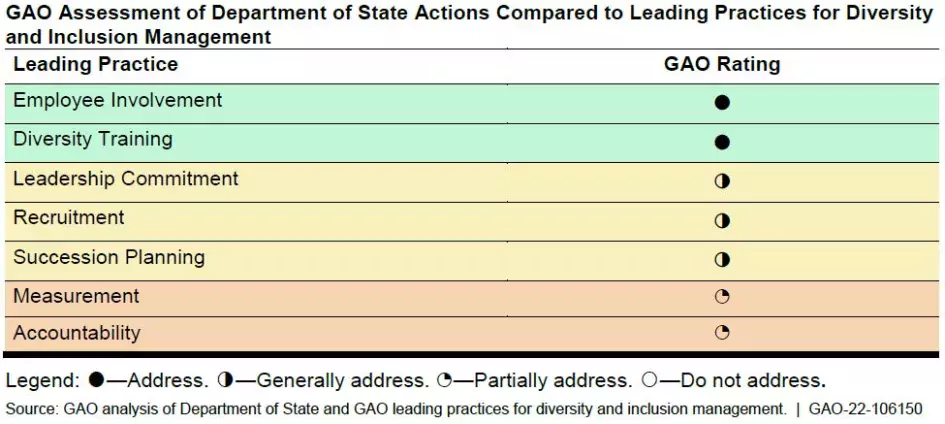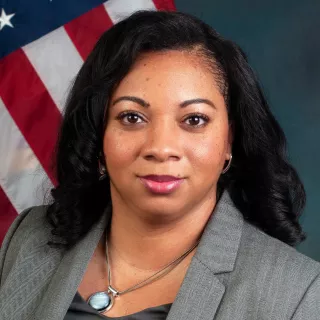Diversity, Equity, Inclusion, and Accessibility at Home and Abroad
Diversity, equity, inclusion, and accessibility (DEIA) are important in every workplace, including federal ones. But the Department of State and the U.S. Agency for International Development (USAID) also need to consider DEIA in all aspects of U.S. foreign policy, including U.S. foreign assistance.
In today’s WatchBlog post, we look at our new reports on the steps State and USAID have taken to promote DEIA in their workforce and overseas.
Image

State’s workforce diversity issues
State has faced longstanding diversity problems. We reviewed its progress toward addressing these problems in January 2020, and found that State’s workforce had made some gains, growing more diverse from 2002 to 2018.
Diversity in State’s workforce in Fiscal Years 2002 and 2018
Image

However, we found promotion outcomes were generally lower for historically disadvantaged racial or ethnic groups and women. We also found a lack of diversity among State’s leadership.
In response to our recommendation, State created four working groups charged with uncovering and removing potential barriers to equal opportunity.
State’s efforts to address barriers to workforce diversity
We recently reviewed State’s efforts to address diversity issues since our 2020 report. State had identified several potential barriers to diversity, such as lower pass rates for African Americans on the Foreign Service Officer test.
Identifying barriers is an important step toward addressing them. However, we found that, in some instances, State did not investigate the root causes of potential barriers before implementing steps to eliminate them. As a result, State can’t be sure the steps it took actually address barriers.
In addition, we found several weaknesses in State’s methodology for analyzing Foreign Service promotion outcomes, which may have prevented it from identifying disparities.
We recommended that State create a plan to improve its barrier analyses and methodology.
State’s adherence to leading practices
Our new report also looked at State’s other workplace DEIA efforts. We found that the department has taken steps to incorporate many leading practices for managing diversity and inclusion.
For example, State appointed a Chief Diversity and Inclusion Officer in 2021 and created a strategic plan outlining its workplace DEIA goals this year.
Image

While these steps were promising, we found that State doesn’t have performance measures to gauge progress for its DEIA goals, and hasn’t taken sufficient actions to hold managers and supervisors accountable. Our survey of State employee organizations reinforced these findings. For instance, 70% of respondents said that State doesn’t hold managers and supervisors accountable for their progress toward achieving diversity and inclusion goals.
Advancing equity abroad in foreign assistance
State and USAID are working to better support marginalized groups abroad in their foreign assistance. For example, in a new report, we found that they are updating their strategies to more directly advance equity, and beginning to define what it would mean for them to be successful in promoting equity.
Image

But State and USAID also face challenges in these efforts. For example, while data could help them track progress toward goals for supporting marginalized groups around the world, they’ve had difficulties in collecting this information from people who could face harm if others learned of their identities—such as LGBTQI+ persons. State and USAID also face challenges related to allocating resources to support these initiatives and difficulty applying racial and ethnic equity in a foreign context. The agencies are working to collect better data and mitigate these and other challenges.
- Comments on GAO’s WatchBlog? Contact blog@gao.gov.





